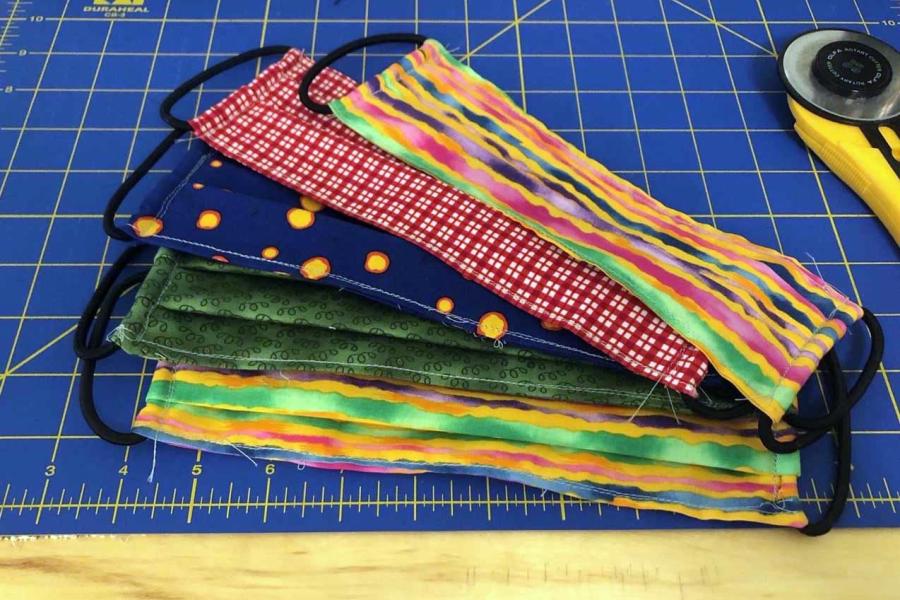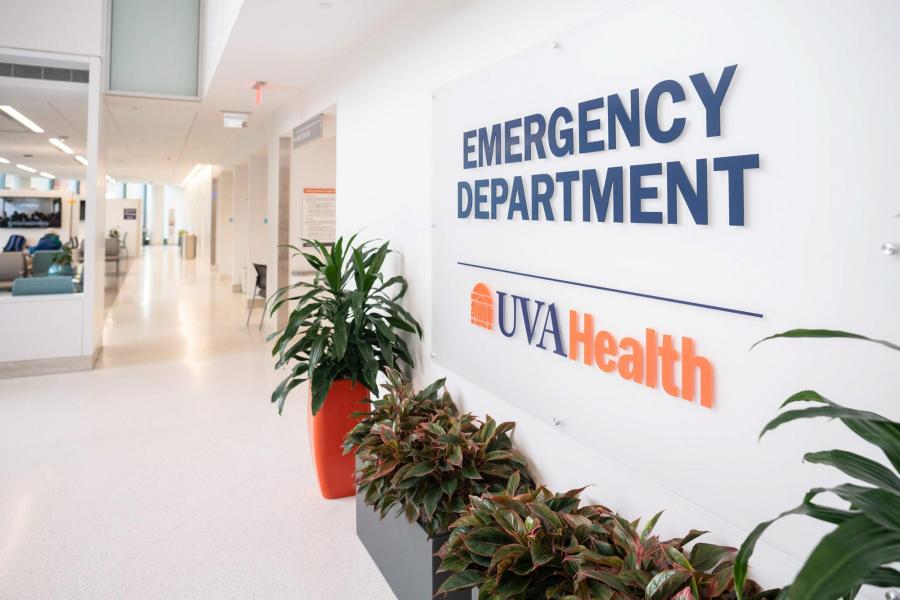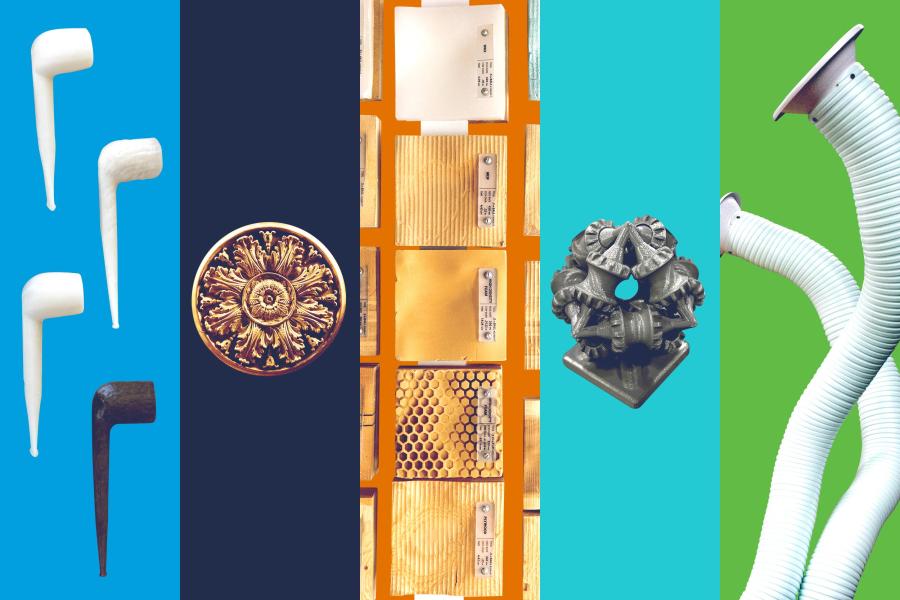Staff, Faculty Across Grounds Unite to 3-D Print, Create, Donate Critical Medical Supplies
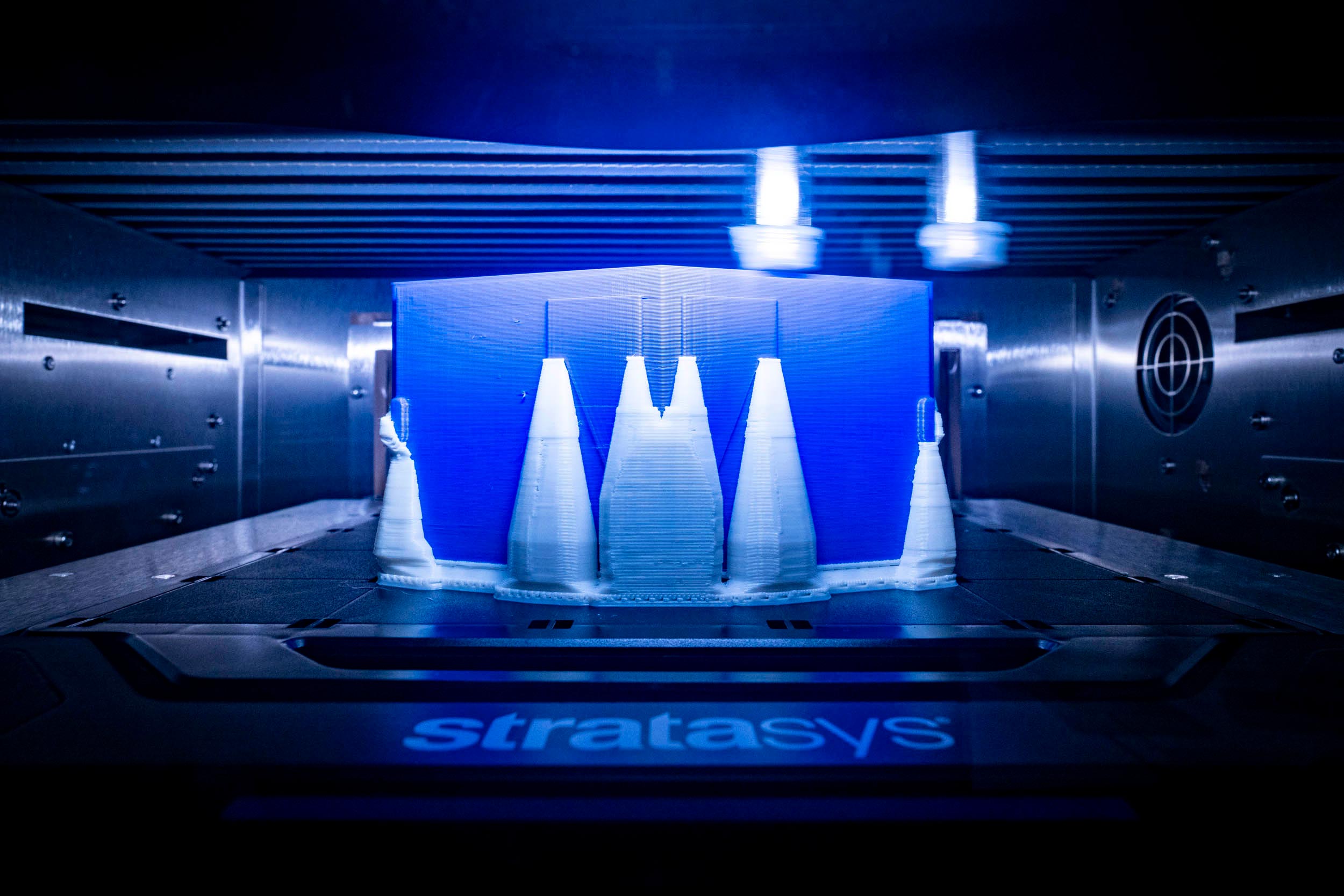
UVA engineers are using 3-D printers to print much-needed respirator masks. (Photo by Sanjay Suchak, University Communications)
We hear the alarming stories on a daily basis: Health care workers and first responders on the front lines in the U.S. areas hit hardest by COVID-19 don’t have the personal protective equipment, or PPE, that they need to safely combat the virus.
Jessica Denomme, an intensive care registered nurse at UVA Health and a paramedic, saw the writing on the wall in mid-March. Though UVA Health has thus far remained equipped with PPE, the demands of caring for people during a surge in the pandemic could quickly deplete the supplies. Denomme was concerned about the health of her co-workers and friends, and her paramedic colleagues suggested that perhaps some PPE could be 3-D printed. She knew exactly whom to contact.
What happened next epitomizes the “can do” spirit that flows through the University of Virginia and into the surrounding region.
Denomme sent an email to the School of Engineering’s William Guilford, assistant dean for undergraduate education and associate professor of biomedical engineering, on March 18 asking about the potential for the school to help. Out of that, a Grounds-wide initiative quickly blossomed and now includes leaders from UVA Health, UVA Engineering, the School of Architecture, the Curry School of Education and Human Development and the Darden School of Business, as well as dozens of local community volunteers and businesses – all working remotely with no idea when they might be able to meet or work together in person.
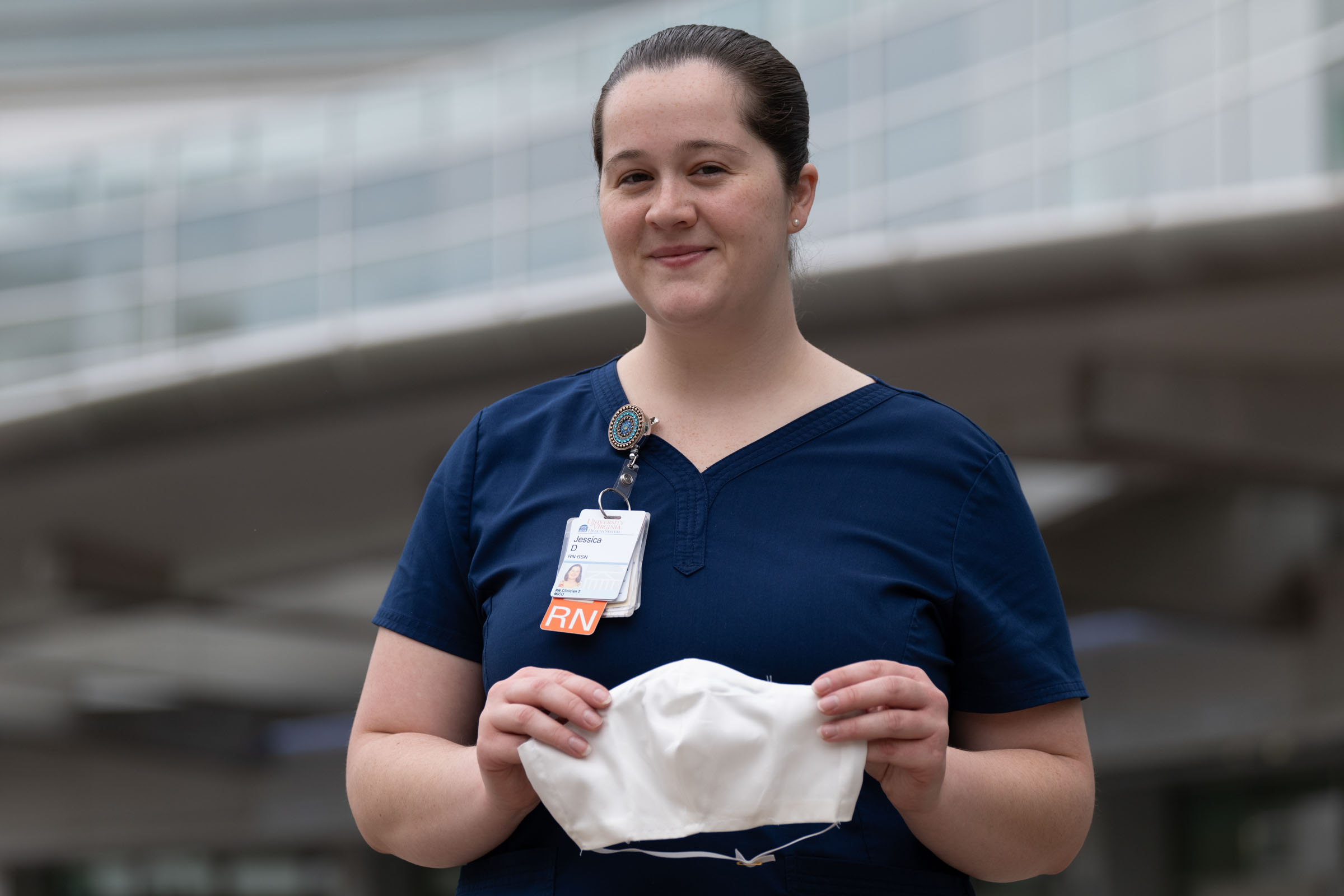
“I was seeing a lot of nurses around the country who didn’t have the protection they needed, succumbing to the disease and needing to be intubated,” Denomme said. “UVA has enough PPE now, but looking ahead, it is important to get on top of this.”
Guilford quickly assembled a Zoom meeting including, among others, Denomme; Dr. Taison Bell, assistant professor of medicine in the divisions of Infectious Diseases and International Health and Pulmonary and Critical Care Medicine at UVA, as well as the assistant director of UVA Health’s Medical Intensive Care Unit; Jonathan Rosen, professor of practice in the Department of Biomedical Engineering, and his wife Nancy; and Tiffany Pillifant, a Darden executive MBA student and operations expert from Thomson Reuters Corp.
“In what other world would a meeting like that happen with such an eclectic group of people?” Bell said. “We all saw this trend where PPE was being depleted, and the supply chains from Italy and China were being shut down because of the virus. Everyone is now competing for limited resources, and states where the virus surged early would end up with most of the supplies.”
At the end of the group’s first meeting, it was clear that N95-like masks, cotton masks, face shields and nasopharyngeal swabs for COVID-19 testing were a priority.
While the group was getting organized, and before the University announced its moves to remote work and “essential tasks only” on Grounds, some people were already firing up 3-D printers in their homes and labs. Some, like the faculty, staff and students of the Department of Materials Science and Engineering, had gotten started gathering and donating existing supplies, such as masks and gloves, to local medical professionals. Other volunteers were threading their sewing machines and hunting the internet for elastic.
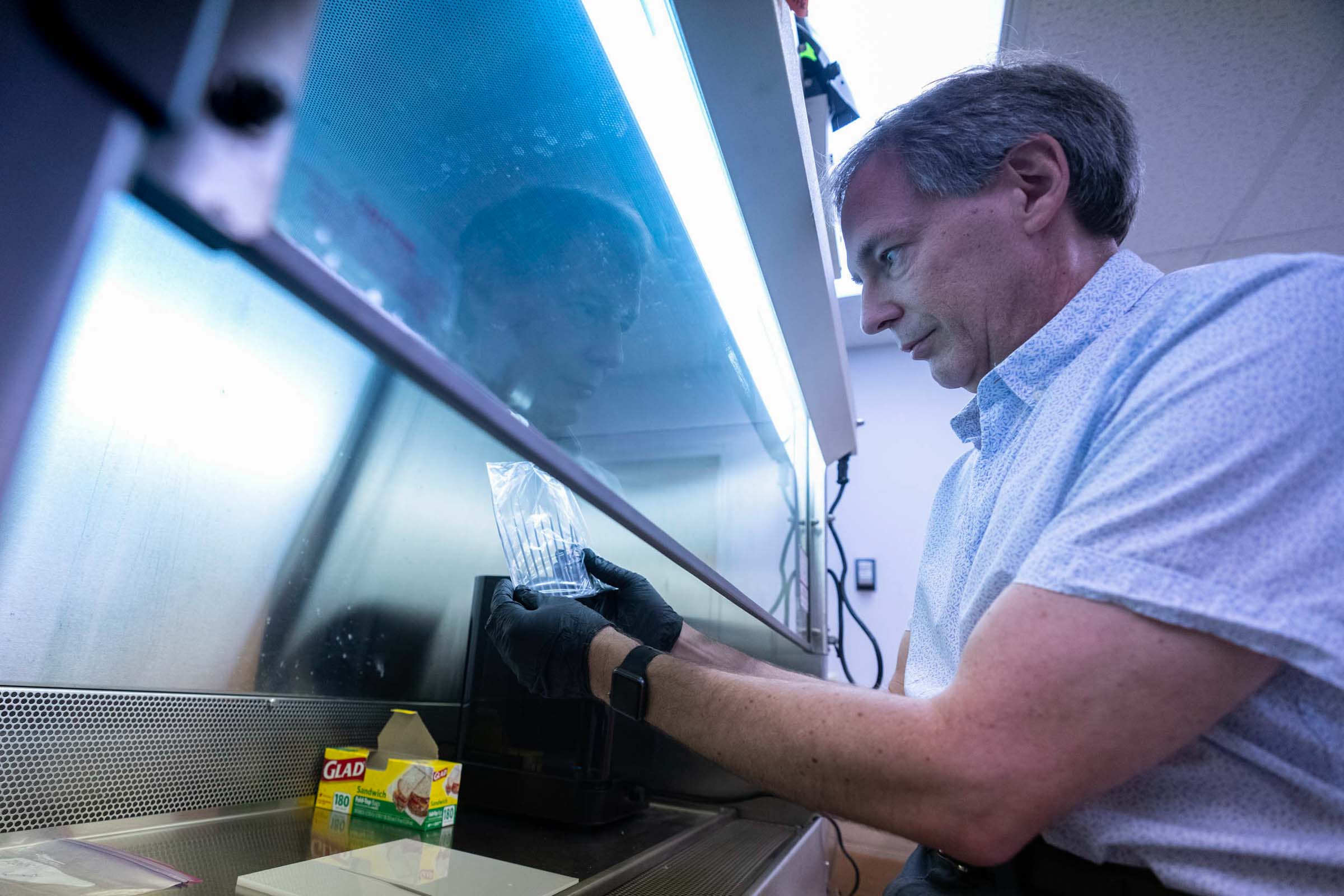
“People just wanted to help,” Guilford said. “What started with a few people has grown to more than 60 individuals. The ‘Maker Grounds’ community really responded. Many of these volunteers are getting little sleep and putting in countless hours toward this collective effort. I think it can be summed up this way: There’s one word I have yet to hear anyone speak when asked to help, and that’s ‘no.’”
“This incredible collaboration really speaks to the value of an academic health system, where we can tap into and benefit from the expertise of talented people from a variety of fields to help us provide the best care for our patients,” said K. Craig Kent, UVA’s executive vice president for health affairs. “We are very appreciative to this entire team for their work to provide us with valuable personal protective equipment.”
“This is a true reflection of our University’s commitment to making the world a better place by offering our expertise where it will help our communities the most,” UVA Engineering Dean Craig H. Benson said.
Guilford and Bell are the conduits between the hospital, the University and the greater Charlottesville community. Bell is working with Denomme and others at the hospital to prioritize needs and provide Guilford a clinical analysis of items on the PPE wish list. Bell has also received input from Jennifer Williams, a neighbor and friend who is an attorney, and organizers of Equip Cville, a local PPE donation drive. Guilford, in addition to prototyping and printing needed medical supplies himself, has worked to build a pipeline between the hospital and the designers and manufacturers on Grounds. All of the activity is being done in accordance with the University’s direction for safety, remote work and only essential tasks on Grounds.
“We aren’t just downloading stuff off the internet. We are taking an engineering design approach to this. Everything needs to be tested and iterated,” Guilford said.
3-D Printing and Retrofitting Masks
Gavin Garner, associate professor and director of the Department of Mechanical and Aerospace Engineering’s Master of Engineering program, and research scientist Joseph Zhu of the department’s Bio-Inspired Research Lab have been 3-D printing prototypes of N95-like masks to mimic the properties of 3M’s respirator, which filters out 95% of airborne particles.
Garner has taken the lead in designing the mask, a complex engineering task requiring answers to a lot of questions. Among them: Which 3-D material makes the best seal over the face? And how fast can the masks be produced? Prototypes can take 10 to 14 hours each to print on machines working on their own in the labs.
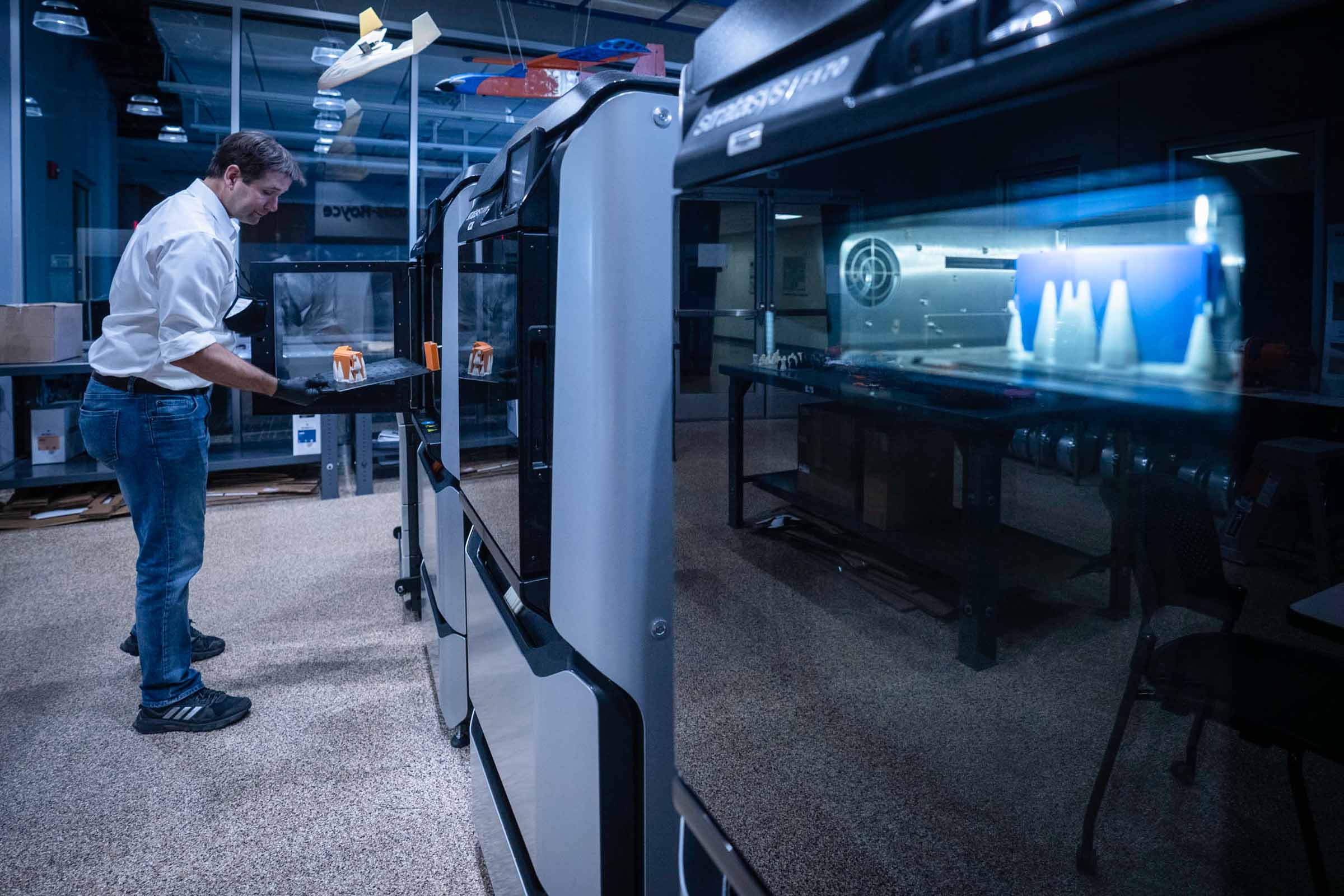
Dwight Dart, design lab engineer for the Mechanical and Aerospace Engineering Department’s Rapid Prototyping Lab, and Zhu will start manning production when the design is finalized and approved, which is expected to be in the coming few days.
Likewise, Keith Williams, associate professor from the Charles L. Brown Department of Electrical and Computer Engineering, has been working remotely to prototype masks that could be fitted with disposable filters.
Such equipment, capable of filtering out particles the size of the COVID-19 virus, are sorely needed for health care workers. Garner is also collaborating with UVA Nursing graduate student Melissa Conner and UVA anesthesiology resident Dr. Evan DaBreo to retrofit scuba masks to meet the criteria for N95-like masks.
“The team has agreed on an approach of many parallel approaches, but few designs,” Guilford said. “It would be great if, for every approach, we could settle on one design that we can validate.”
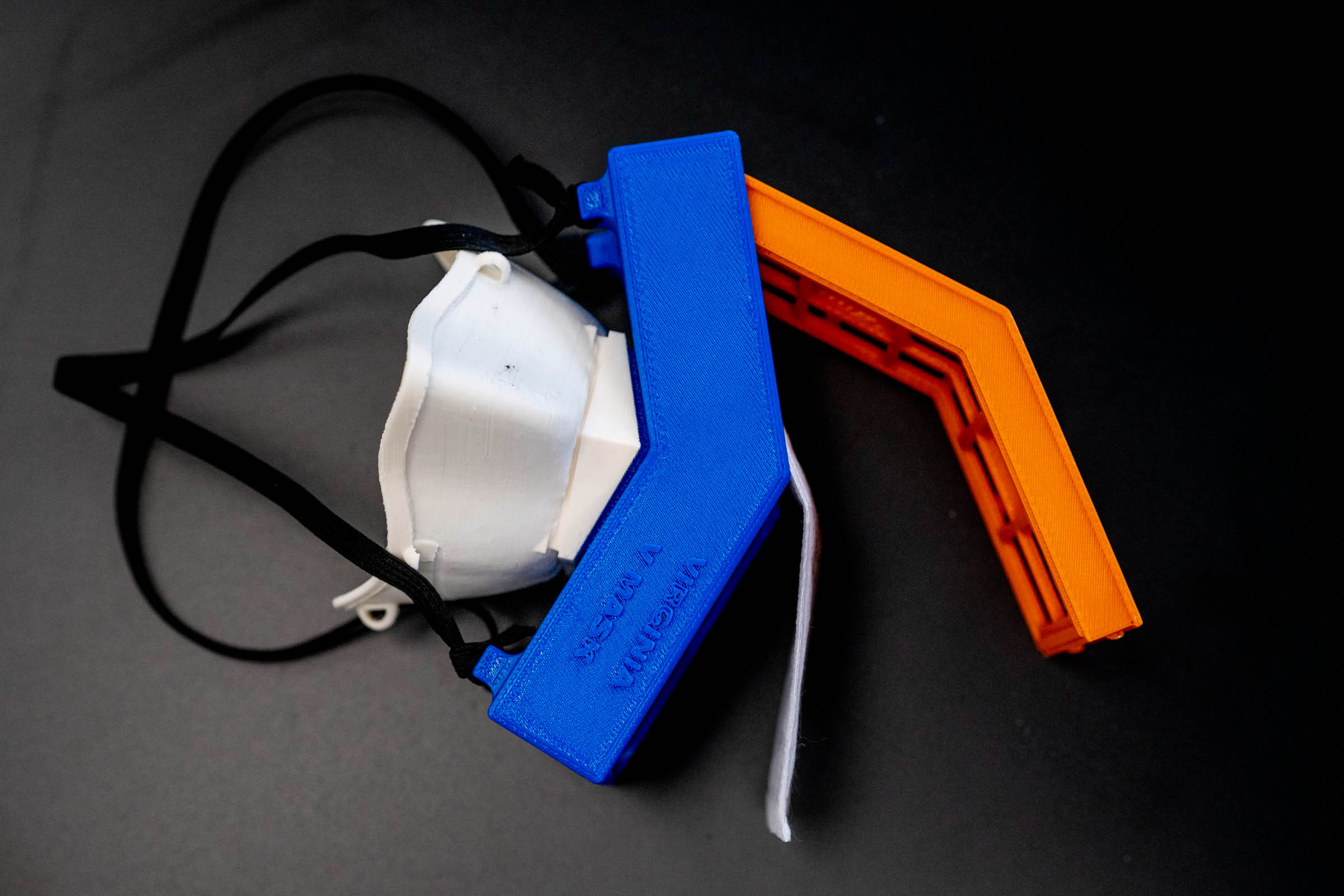
“The concept of the scuba mask is fairly simple in addition to offering added eye protection. Ability to perform a seal check. Durable and reusable,” Conner wrote to other team members on the group’s Slack channel. The mask is “relatively inexpensive in comparison to thousands of masks and eye protection getting thrown away. I think this will also offer buy-in from health care team members. As a nurse, I'd feel much safer wearing this.”
Pillifant, the Darden Executive MBA student, has been instrumental in building a materials sourcing and product distribution network as well as constructing a communications framework for the UVA members of the team and the local community.
“I’ve worked with engineers my whole life,” Pillifant said. “They are so good at creative problem-solving. I’m here to help streamline the operations.”
One of the greatest challenges so far has been finding sources for elastic. “We’ve gotten creative because of this worldwide shortage, like using shock-cord found in tent poles,” she said.
Grassroots Effort to Sew Masks
Despite the effort ramping up very quickly, the commitment from the community already has been significant. Hundreds of people around the area have signed up to help the group fabricate items at home, but more volunteers are needed.
Many of those volunteers will sew cotton masks developed by UVA Engineering’s Jonathan and his wife Nancy.
The masks are constructed using high-density cotton sheets, double-folded, with a pocket for an air filter; floral wire is used to provide a tight fit around the nose, and elastic is sewn in to fit the wearer. The masks can be reused and sanitized in a washing machine, Rosen said.
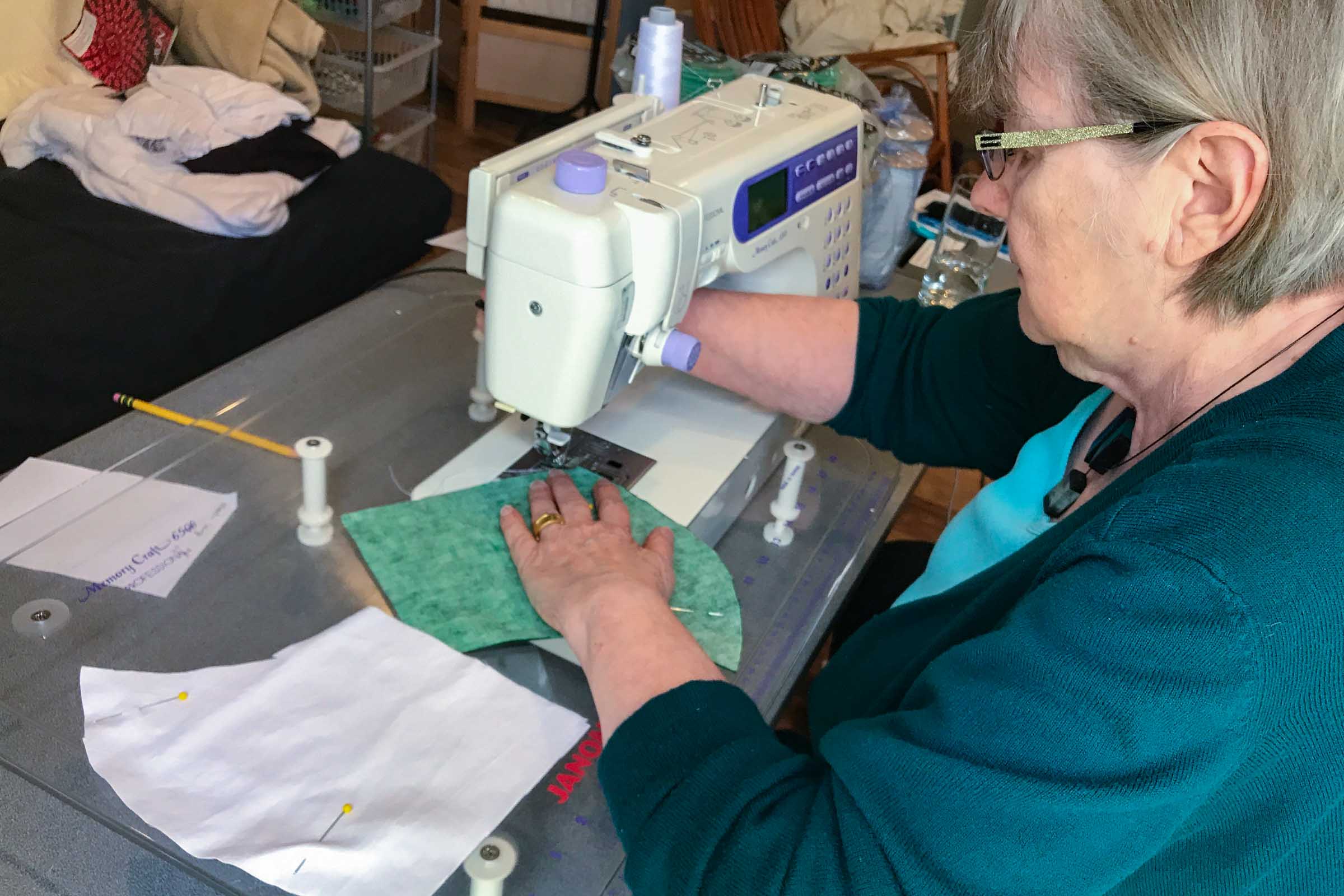
The Rosens are putting together mask-making kits to give to community volunteers. Each mask can be sewn in about 15 minutes. The Rosens have enough kits to make 1,000 masks, and their eventual goal is to get materials and volunteers to produce more than 10,000. So far they have self-funded the operation, but like several other initiatives that are similarly funded, more financial and material support from the outside is welcomed. As Pillifant pointed out, elastic straps are in especially short supply.
“This is a grassroots effort. We are doing this in support of the nurses, doctors and staff who are risking their lives to take care of others,” Jonathan Rosen said.
Nancy Rosen has already sewn more than 100 masks herself. “It was exciting being on the team and I was glad to make the prototypes.”
Both the cotton masks and the N95-like masks are in the process of being tested for their filtration by Gaurav Giri, assistant professor in the Department of Chemical Engineering, and by John Wright, industrial hygienist for UVA Environmental Health and Safety, which has been working closely with the UVA research community and UVA Health throughout the COVID-19 crisis to provide technical, safety and regulatory support.
“We need to know how well these masks we are producing work compared to the N95 masks,” Giri said. “We have the technology here in our lab to be able to test the filtration quickly.”
3-D Printing Nasopharyngeal Swabs and Building Face Shields
Guilford said priorities are constantly shifting. “N95-like masks were a priority for a while. Now there is a critical need for nasopharyngeal swabs.” He has turned his attention to designing, prototyping and 3-D printing them by the hundreds using UVA Engineering’s 3-D printers.
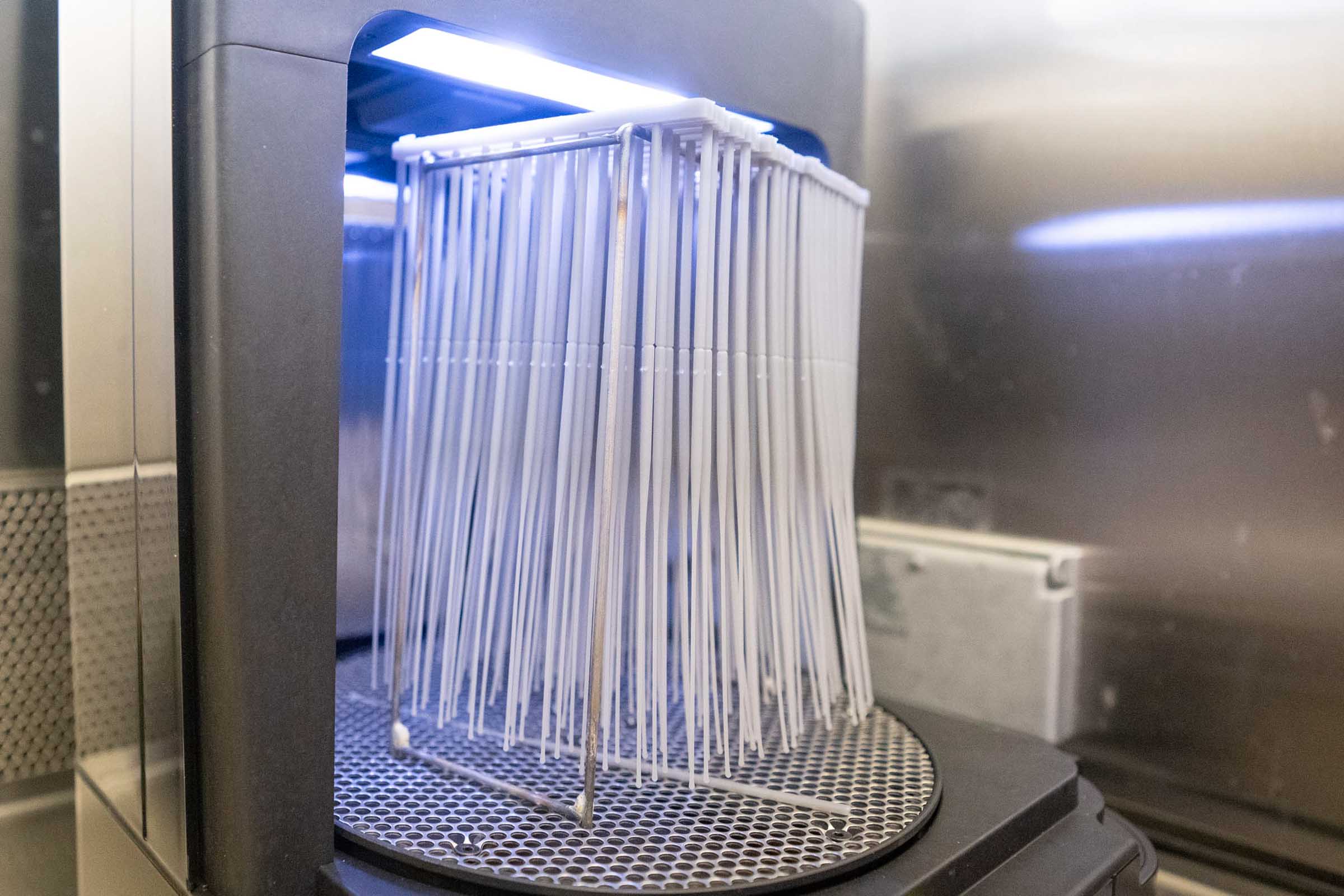
The unique swabs are used to test for COVID-19 and need to be flexible but small, since they have to reach the back of the throat though the nose. As you might imagine, the group’s Slack channel around this initiative is long and detailed, with back and forth with between Guilford, other UVA Engineering faculty and Andy Homyk, an engineer at HemoSonics LLC, a local company focused on diagnostic tools for the health care industry. The group has been discussing everything from where to source the flocking that will be attached to the end of the swab to the detailed design of the swab head.
“Me being a non-engineer, it has been really interesting to view the work and thought process engineers have,” Bell said. “They have an ability to disconnect emotionally from the work in order to make a better product. They see the problem and work incrementally toward finding a solution and then perfecting it.”
UVA’s collaborative, multi-disciplinary culture has fueled the cooperation. Just last weekend, Denomme came to the group with a new request. On the ICU ward, medical staff are now required to be constantly masked. Over 12-hour shifts, having an elastic surgical mask pulling on the ears was proving to be extremely uncomfortable, and staff were wondering if there might be a solution.
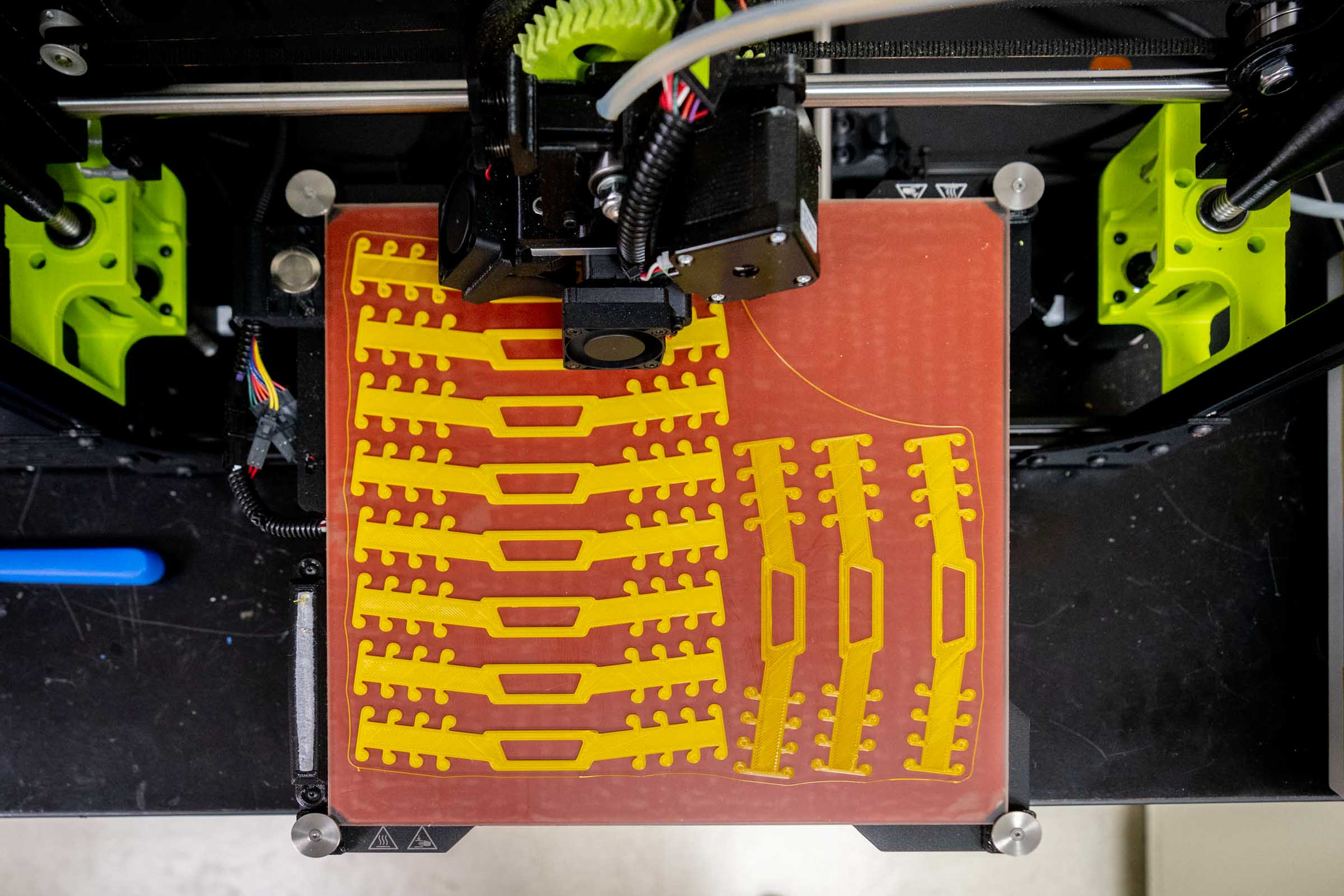
Because of the proximity and close working relationship between the hospital and UVA Engineering, especially the Department of Biomedical Engineering that is housed at the UVA Health complex, the team was able to turn that request around quickly with a 3-D printed ear protector originally designed by a 12-year-old Boy Scout. After a couple iterations and testing by health care workers, the staff deployed the new mask straps within a few days.
Melissa Goldman, manager of the School of Architecture’s FabLab, one of the dozens of maker spaces on Grounds, is collaborating with UVA Engineering’s Sebring Smith, shop supervisor at Lacy Hall, an experiential learning center that under normal, non-pandemic conditions helps students fabricate various projects from around the University. Goldman, Sebring and Goldman’s assistant lab manager, Trevor Kemp, are cutting out more than 1,000 face shields from thin-film plastic using a water jet cutter.
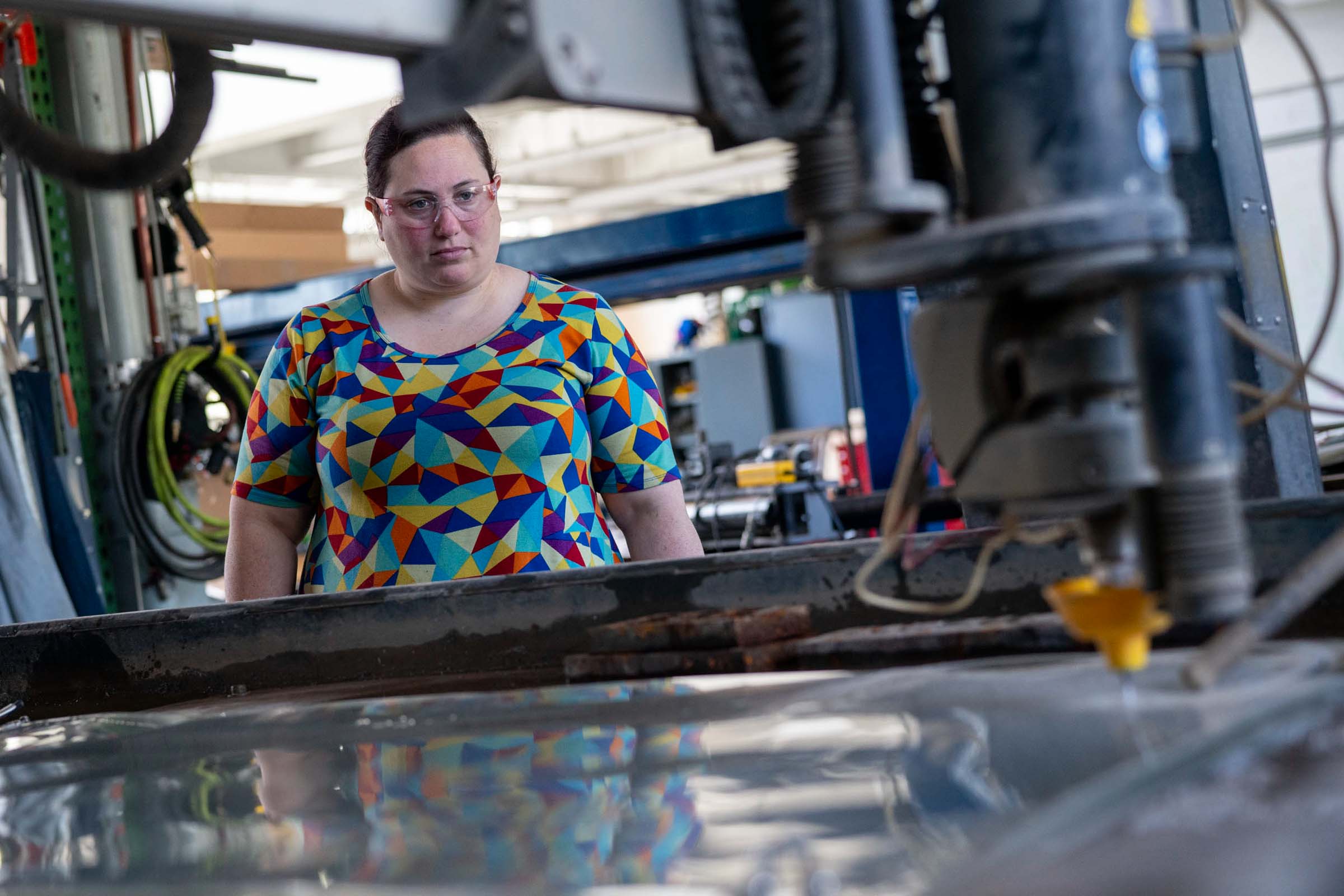
Goldman was early to the initiative and has been working closely with UVA Health to produce a comfortable and effective shield that will protect health care workers from aerosol particles and moisture as well as lengthen the life of N95 masks. Goldman has enlisted neighbors, working away from Grounds in an appropriately socially distanced way, to finish constructing the face shields with foam and elastic. “We hope to have 1,000 bagged up and ready to use by next Monday,” Goldman said.
Goldman and others working on the face shield initiative also plan to partner with the larger Charlottesville maker community, area businesses like Cardboard Safari and local volunteers to produce about 10 times more face shields to be used not only at UVA Health, but also at Sentara Martha Jefferson Hospital and by other health care providers such as hospice workers and first responders.
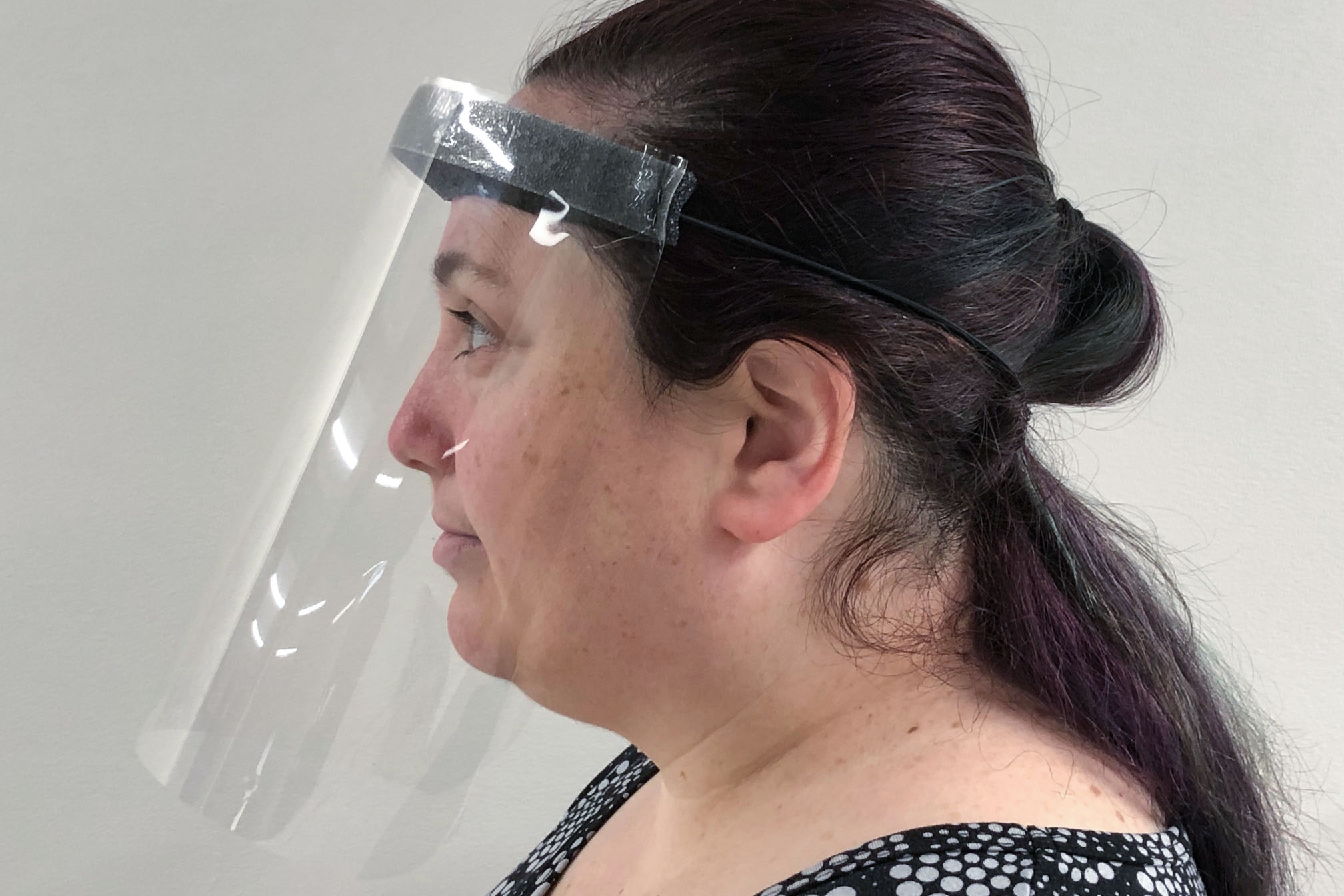
“The win is when the virus has run its course and we can all be together,” Goldman said. “It would be great to meet everyone in person when we can safely do so.”
While various models indicate the peak for the virus in Virginia has not yet arrived, getting an early start on building a ready supply of PPE could prove to be a lifesaver.
“We have very good prototypes now and the lead time to scale up,” Bell said. “What we said early on is that we can make something just as good, if not better.”
Looking to the Future
The “something” they’ve created isn’t just PPE, but also a vibrant community encompassing UVA, local residents and business leaders. They may have been strangers before, but they have come together at a safe social distance to keep health care workers, and ultimately, all of us, safer and healthier.
John Scully, Charles Henderson Professor and chair of the Department of Materials Science and Engineering, said it’s the least he and other volunteers can do for health care workers, who are putting their own lives on the line to care for sick people. Scully and the department’s faculty, staff and students went into action around mid-March when one of his department’s staff members, Claire Culver, explained the plight of her OB/GYN husband and his fellow doctors, nurses and staff, who are also keeping their private practices open to serve patients despite being unable to replenish their stocks of PPE. Scully mobilized his department to donate protective gear from labs; one graduate student who is stuck in China due to border restrictions has been buying N95 masks there and shipping them back at his own expense.
“I find it difficult to put into words how much I and my partners appreciate all of the protective gear that was provided to us by Materials Science,” wrote Dr. James Culver in a thank-you message. “You and your staff were some of the first to respond to our requests for help, and the protective equipment we received has played an important role in our efforts to keep ourselves, our staff, and our patients safe.
“I don’t know that we will ever be able to repay the favor, but I hope one day we might have that opportunity.”
Recently, after coming off a long, 12-hour nursing shift in the UVA ICU treating COVID-19 patients, Denomme was weary but feeling encouraged.
“In the beginning I was just hopeful. Now, I’m beyond blessed to have connected with these people. It means so much to have help from people I’ve never met before.”
Media Contacts
Associate Vice President, Marketing and Brand Strategy University Communications
emather@virginia.edu (434) 243-5496







